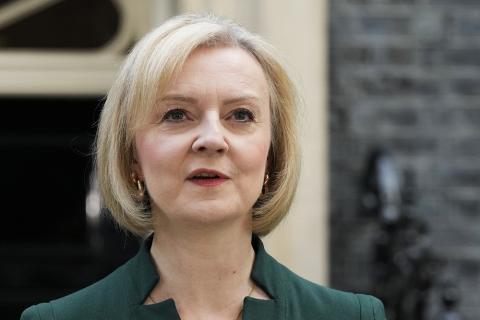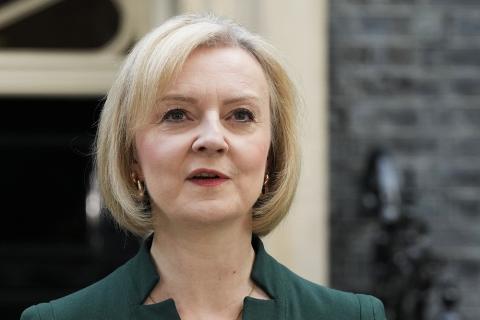
It was all over for Liz Truss’s war on economic orthodoxy the moment she decided to summon Kwasi Kwarteng back from the annual meeting of the International Monetary Fund in Washington.
If the sacking of the Treasury’s top mandarin, Sir Tom Scholar, marked the beginning of the campaign against Whitehall beancounters, then the end came when Jeremy Hunt became the fourth chancellor of the exchequer of 2022.
The breathing space Truss secured by sacking Kwarteng proved to be short-lived and her replacement, Rishi Sunak, quickly drew a line under her economic experiments.
What Truss meant by the orthodoxy was the Treasury’s long-held aversion to running budget deficits and its belief that solid public finances are the bedrock of a successful economy. But for a more detailed look at the orthodoxy, here are the seven pillars of “wisdom” that differentiate the conventional from the maverick.
Pillar 1: Bank of England independence
The Bank has been free to set interest rates since granted independence by Gordon Brown in 1997, and the conviction that this makes for better policy decisions is widespread. Indeed, it was not just tax cuts that troubled the financial markets while Truss was prime minister: it was also her attacks on Threadneedle Street’s handling of monetary policy and the fear that she intended to exert stronger political control.
The case for: politicians can’t be trusted to set interest rates and the Bank (until recently at least) has done a good job in hitting the government’s 2% inflation target.
The case against: The decisions made by the Bank are deeply political even if made by technocrats. It got lucky in the early years of independence thanks to the impact of globalisation on holding back inflation.
Pillar 2: macro-economic policy is principally about control of inflation
It was not always this way. In the three decades after the second world war, the aim of policymakers was to sustain full employment through the use of interest rates, taxes and public spending. If inflation started to become a problem, it was dealt with through supply-side interventions. This all changed with the stagflation of the 1970s. Thereafter, macro policy was about keeping inflation low, while supply side policies were about raising growth rates.
The case for: Inflation is bad for growth and there is no trade-off that allows policymakers to choose a bit more growth at the expense of slightly higher inflation.
The case against: Growth, investment and improvements in productivity were all higher when full employment was the goal.
Pillar 3: growth is good
Despite the increased focus on the climate emergency, the idea that a successful economic policy requires faster growth remains an article of faith. Sunak and the Labour leader, Keir Starmer, vie with each other to come up with the most growth-friendly policies, with the only nod to alternative thinking being the caveat that growth should be “sustainable” and consistent with the UK’s climate change goals.
The case for: growth has brought great benefits over the past 250 years and is needed to fund improvements in public services.
The case against: growth is killing the planet.
Pillar 4: free movement of goods, people and money
To be truly economically orthodox means opposing trade barriers, curbs on immigration and capital controls, because all these restrictions put up barriers to economic efficiency. Most of the fast-growing countries of east Asia have used protectionism to support economic development, but most economists support the idea that trade should be liberalised, investors allowed to move their money from country to country, and migrant labour should be used to tackle skills shortages.
The case for: Protectionism means slower growth.
The case against: Without a degree of protectionism there will be no meaningful renaissance of manufacturing.
Pillar five: the state should not be in the business of picking winners
As with the shift from full employment to low inflation, this dates from Britain’s experience in the 1970s, when large amounts of public money were spent on subsidies to state-owned companies. The struggles of the car industry and the shipyards led to a strong conviction that civil servants were hopeless at deciding which sectors to support and that matters were better left to market forces. To an extent, the idea of picking winners was always a myth, since industrial policy in the 1970s was about backing losers, but the belief in a hands-off approach is ingrained.
The case for: Remember British Leyland.
The case against: Other countries – including the US – have found smart ways to nurture growth sectors of the economy through industrial policy.
Pillar six: Brexit is bad
Not all economists voted remain in the 2016 referendum but most of them did, on the grounds that it would mean weaker trade, less inward investment and a hit to productivity. Although both the Conservatives and Labour are committed to making Brexit a success, there is no doubt that the policy establishment believes the decision to leave the European Union was a mistake. This is true of domestic bodies such as the Office for Budget Responsibility and international organisations such as the International Monetary Fund.
The case for: Growth is bound to suffer if the UK cuts itself off from its main trading partner.
The case against: Brexit provides an opportunity to do things differently and rethink a failing economic model.
Pillar seven: modern monetary theory is bunk
MMT represents a real challenge to the orthodoxy because it says that budget constraints don’t really exist for countries that issue their own currency. Put simply, MMT says governments can print as much money as they need to spend because there is no risk of them going broke. This runs counter to the belief – strongly held in both the Treasury and the Bank of England – that governments should finance spending through taxation and keep a wary eye on the level of borrowing.
The case for: governments have a nerve to say MMT is dangerous, given their willingness to turn on the electronic printing presses during the global financial crisis and the pandemic.
The case against: MMT is dangerous and will lead to hyper-inflation.
The irony of Truss’s brief premiership is that challenging the economic status quo is now harder than it was before she took office. Indeed, her political epitaph is likely to be: I fought the orthodoxy and the orthodoxy won.












